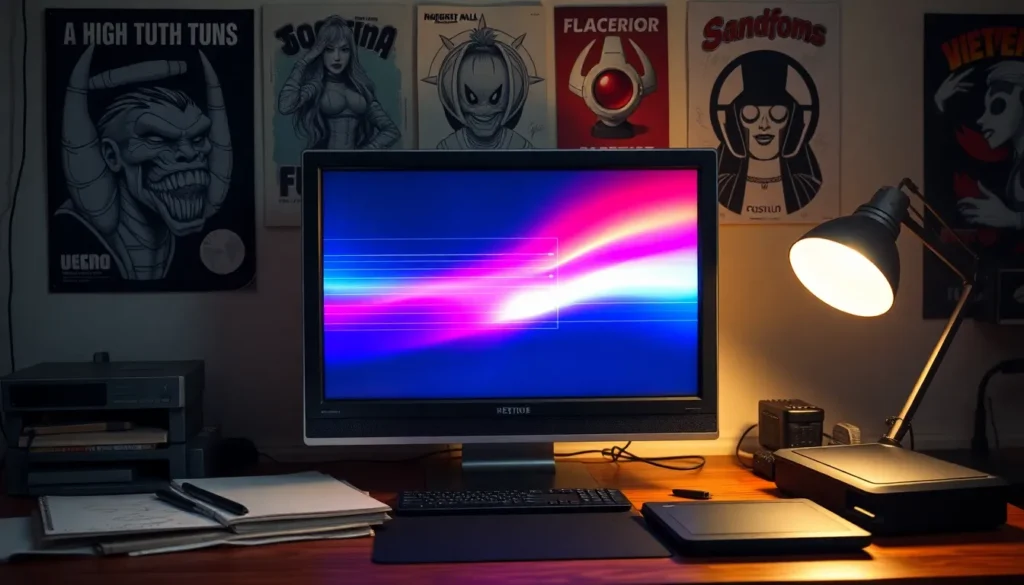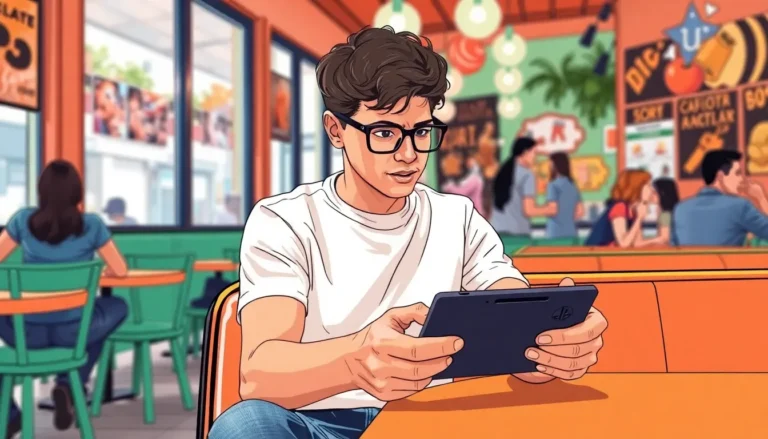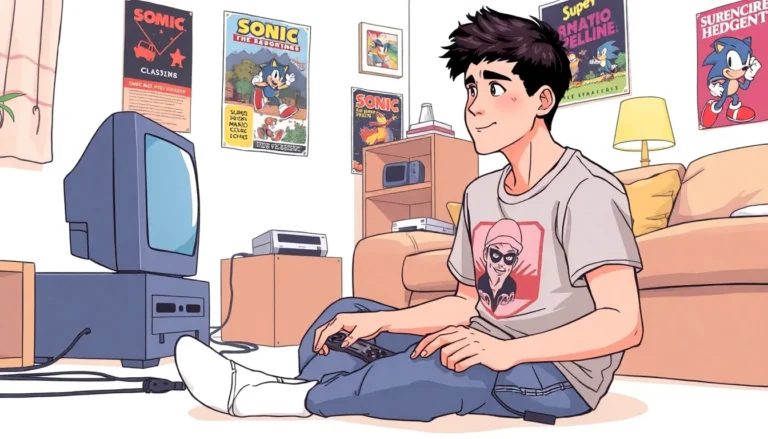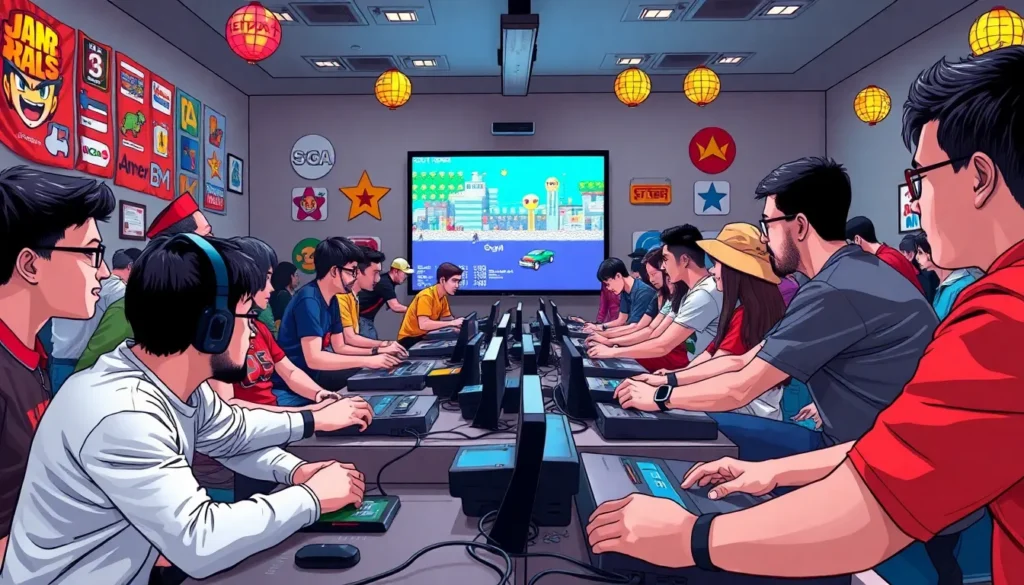In a world where digital perfection reigns supreme, the scanlines effect swoops in like a quirky superhero, bringing a touch of nostalgia and character to modern visuals. Imagine your sleek, high-definition screen suddenly sporting the charming imperfections of vintage CRT monitors. It’s like adding a splash of retro flair to your high-tech life, and who doesn’t love a good throwback?
Table of Contents
ToggleOverview of Scanlines Effect
The scanlines effect simulates the visual characteristics of old CRT monitors. It manipulates images by introducing horizontal lines across the display, creating a retro aesthetic. Many artists and designers utilize this effect to evoke nostalgia, blending the old with the new in modern graphics.
This technique enhances visual storytelling by providing a grainy texture reminiscent of classic television sets. Viewers often associate the scanlines effect with a sense of familiarity, bridging the gap between past and present. In digital media, its application spans videos, graphics, and even gaming environments.
Many software tools, such as Photoshop and After Effects, offer built-in features or plugins to create this effect. Artists can customize the intensity, spacing, and colors of the lines to fit specific artistic visions. This flexibility allows for a wide range of creative possibilities, making it a popular choice among creators seeking a vintage touch.
The scanlines effect appeals to audiences who appreciate retro culture, blending nostalgia with modern visuals. A growing trend in design includes using this effect in promotional materials, video games, and music videos. Its ability to resonate emotionally enhances viewer engagement.
Using the scanlines effect invites exploration of aesthetics that honor historical technologies within contemporary formats. This connection not only celebrates past innovations but also inspires future design concepts, proving that the past can always find a place in the present.
History of the Scanlines Effect
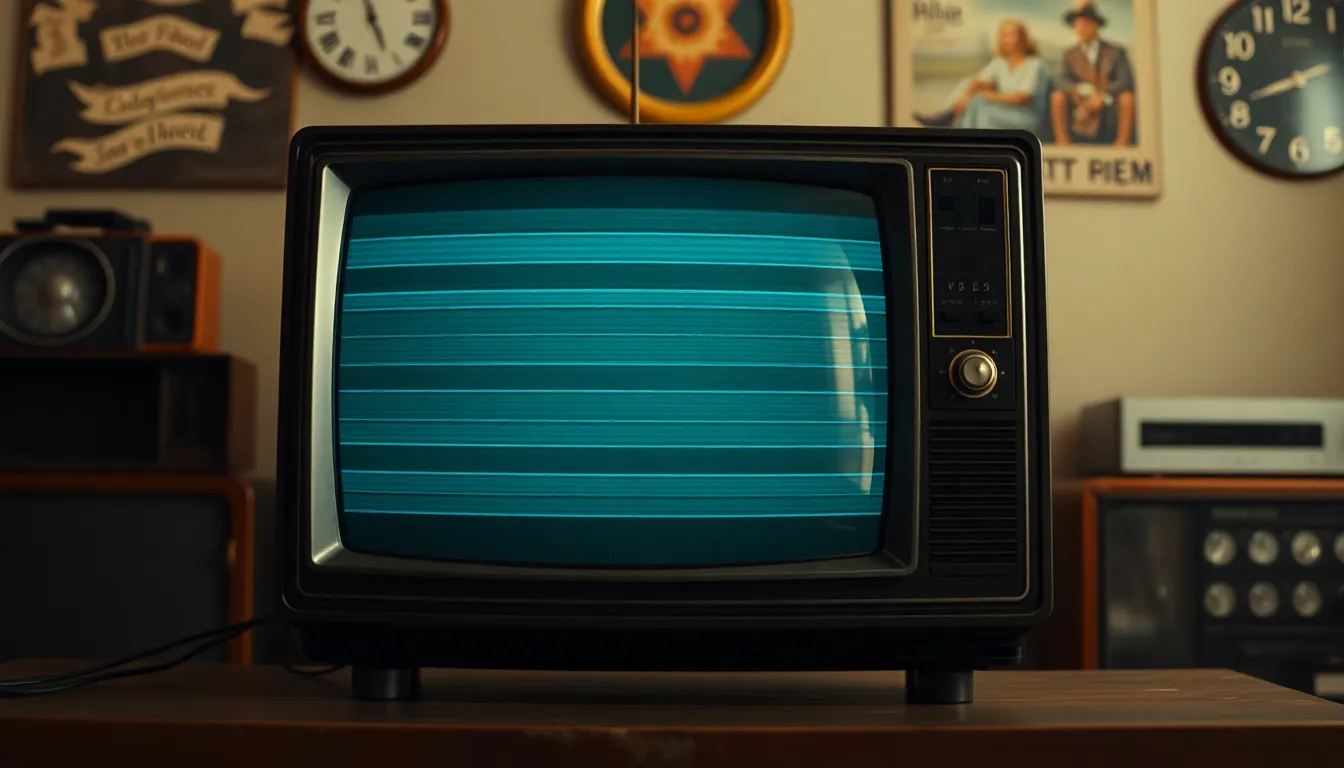
The scanlines effect has roots in vintage technology and has adapted over time. It combines historical significance with modern design trends.
Origins in Television and Film
Scanlines originated in the realm of television and film during the late 20th century. CRT monitors displayed images using electron beams, which created visible horizontal lines. Those lines were a byproduct of the screen’s refresh rate and contributed to the overall aesthetic. Early filmmakers often embraced scanlines as part of their visual storytelling technique. This look became synonymous with the nostalgic charm of classic films and television programs. Series and movies utilized the effect to evoke particular moods. Audiences recognized this visual cue as a hallmark of vintage media, solidifying its place in entertainment history.
Evolution in Digital Media
Digital media has transformed the scanlines effect into a celebrated design choice. With the advent of software tools, artists incorporate scanlines into graphics, videos, and interactive content. Platforms like Photoshop allow for precise control over the look of scanlines, including their density, color, and spacing. This flexibility has attracted creators in various fields, from gaming to music video production. Modern designers often use scanlines to evoke nostalgia while enhancing visual appeal. By combining retro style with current technology, the effect fosters a unique connection between past and present media experiences.
Technical Aspects of Scanlines Effect
The scanlines effect mimics vintage display technology through intentional imperfections. It enhances modern visuals, evoking a sense of nostalgia.
How Scanlines Are Created
Scanlines originate from a process that adds horizontal lines across images. Designers utilize software tools like Photoshop and After Effects to incorporate these lines. Adjustments to spacing, intensity, and colors allow for customization to achieve desired effects. Overlaying semi-transparent lines simulates the grainy texture of CRT monitors. Layer blending modes and opacity settings enhance integration into visuals, making them appear more authentic.
Variations of Scanlines Effect
Multiple variations of the scanlines effect cater to diverse artistic needs. Artists can choose different line widths or adjust their spacing for various visual impacts. Some may opt for color variations to mimic specific vintage screens, while others may emphasize contrast for a more dramatic look. Alternating line patterns, including thicker or animated lines, create dynamic visuals. Each variation serves unique creative purposes across media, from gaming graphics to music videos.
Applications of Scanlines Effect
The scanlines effect finds vast applications in various digital media, enhancing aesthetics and evoking nostalgia.
Use in Video Games
Video games frequently incorporate the scanlines effect to create a retro gaming experience. Many developers utilize this effect to simulate the look and feel of classic gaming consoles, enhancing gameplay immersion. Players enjoy the warm, nostalgic feelings often associated with vintage graphics through this visual technique. Customization options allow designers to tweak line intensity and spacing, providing precise control over the final appearance. Titles like “Cuphead” exhibit scanlines, achieving a unique blend of modern gameplay with vintage artistry. This application not only appeals to long-time gamers but also attracts new players interested in retro styles.
Use in Graphic Design
Graphic design benefits from the scanlines effect by enabling designers to evoke a vintage aesthetic in their work. This technique can enhance anything from album covers to digital art pieces, providing distinctive character and texture. Designers often experiment with different line densities and colors to achieve desired visual effects. For instance, scanlines can emphasize certain elements, guide viewer focus, or create depth in designs. The nostalgic quality resonates well with audiences who appreciate retro influences. Using this effect in promotional materials further strengthens brand identity by conveying a sense of history and familiarity.
The scanlines effect stands as a testament to the enduring appeal of retro aesthetics in modern design. By skillfully blending nostalgia with contemporary visuals, creators can evoke powerful emotions and connect with audiences on a deeper level. This technique not only enhances the storytelling aspect of digital media but also celebrates the rich history of visual technology.
As artists continue to explore innovative ways to incorporate scanlines into their work, the possibilities for creative expression remain limitless. Whether in gaming, graphic design, or video production, the scanlines effect offers a unique way to pay homage to the past while pushing the boundaries of modern artistry.

